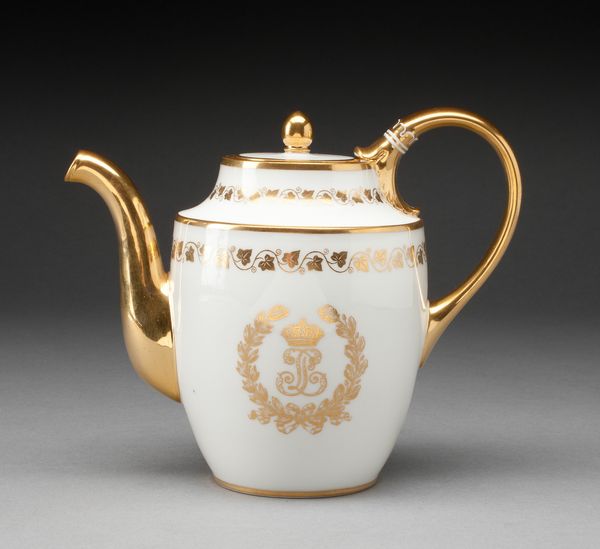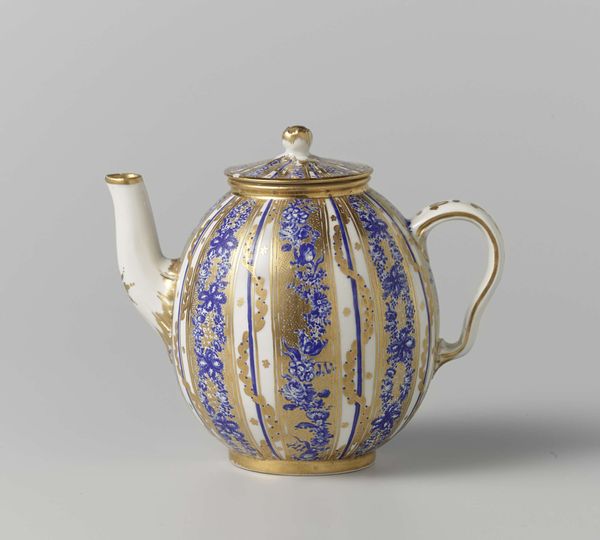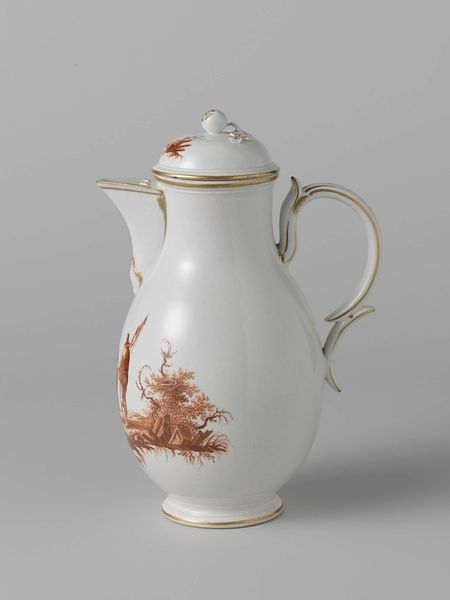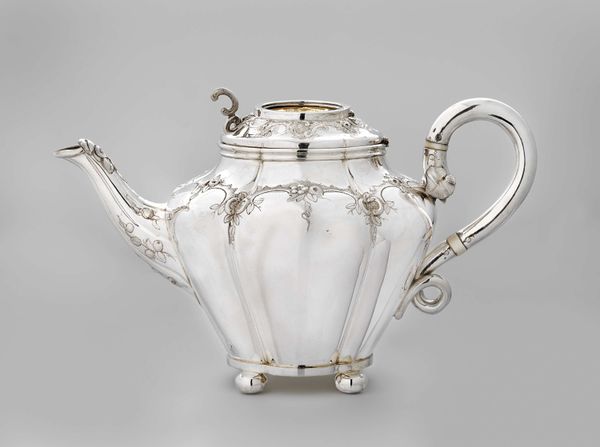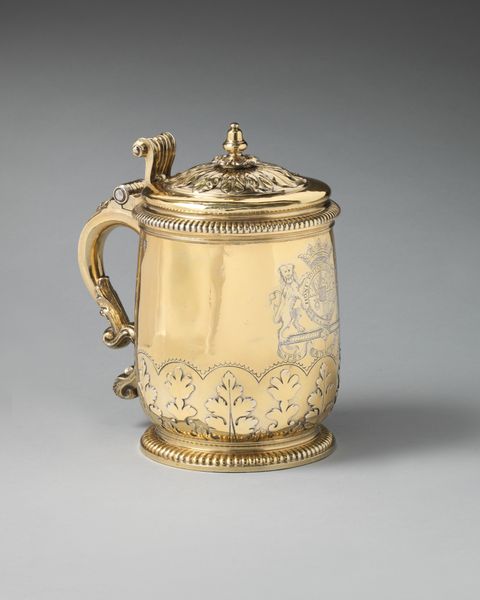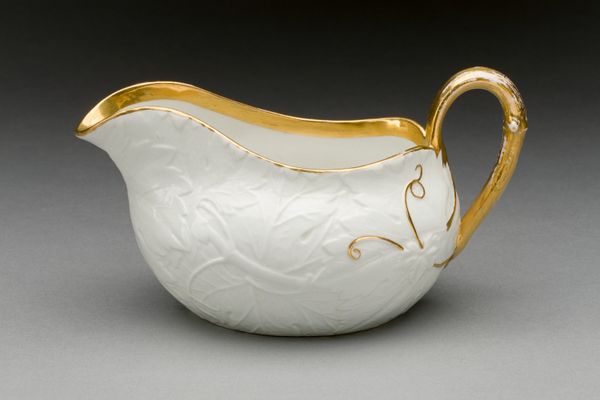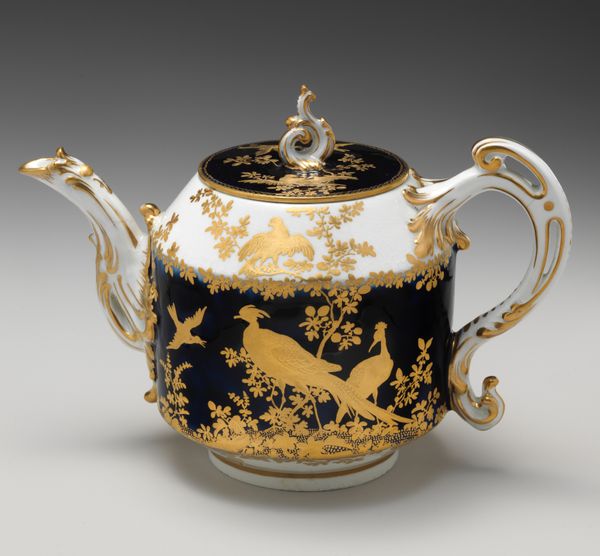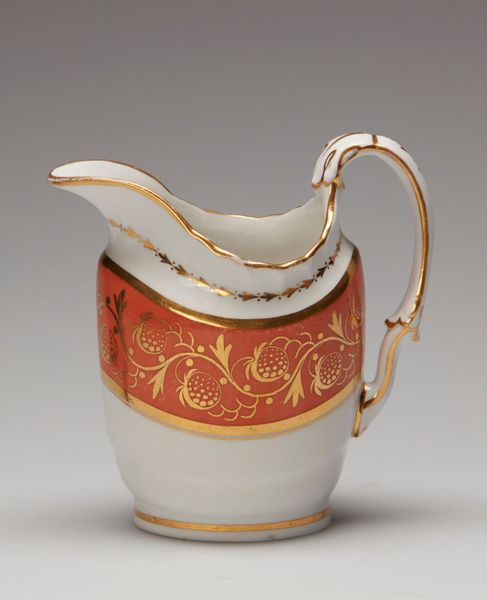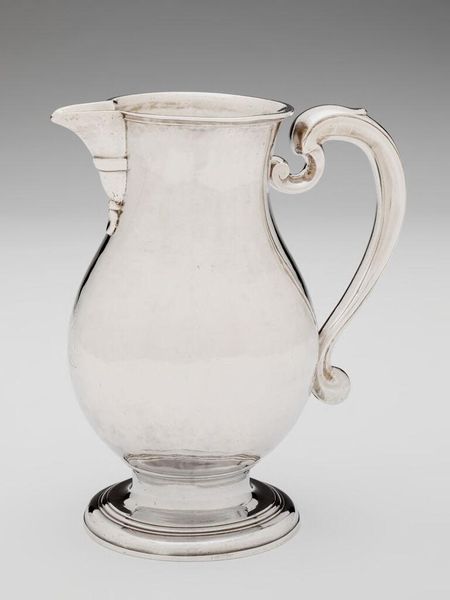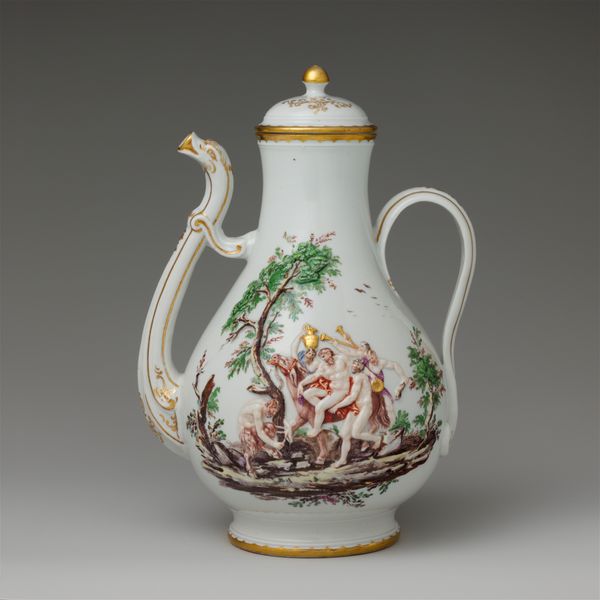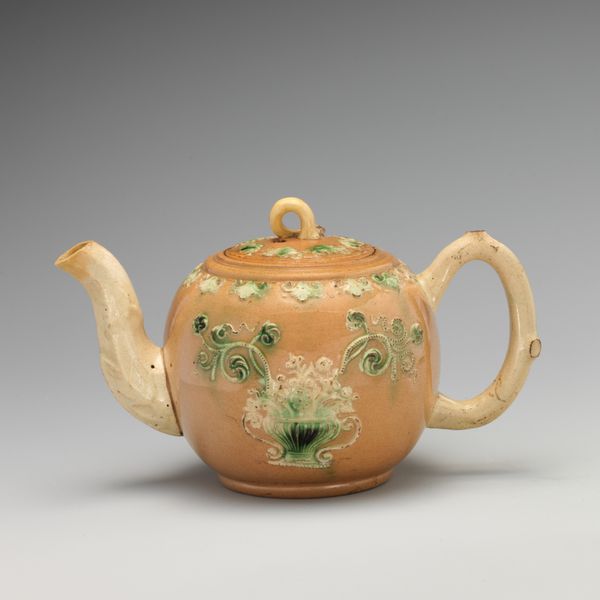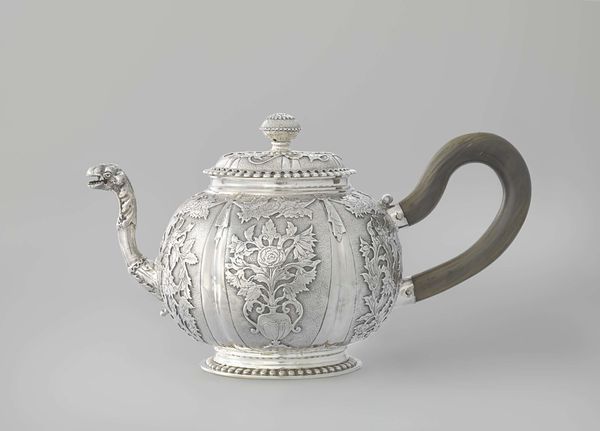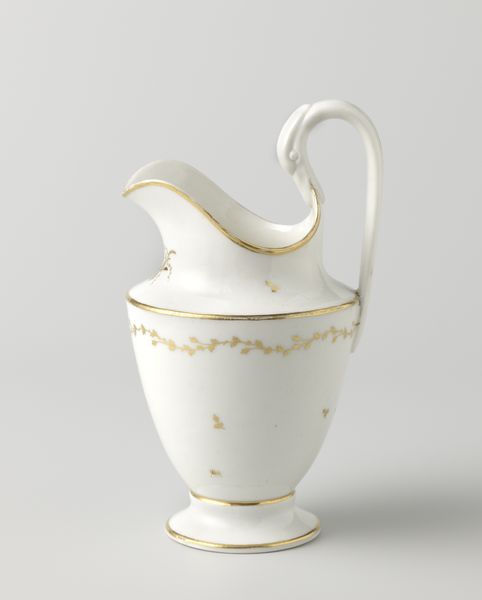
ceramic, porcelain
#
ceramic
#
porcelain
#
decorative-art
Dimensions: 21.6 × 17.2 cm (8 1/2 × 6 3/4 in.)
Copyright: Public Domain
Editor: Here we have the "Covered Pitcher" made in 1839 by the Manufacture nationale de Sèvres, crafted from porcelain. It strikes me as quite elegant, especially the simple white surface contrasted with ornate gold detailing. What's your take on it? Curator: Elegance is certainly a key component. I see it primarily as a reflection of the 19th century's fascination with luxury and display, closely tied to the burgeoning power of the bourgeoisie. Pieces like this weren't just functional; they were declarations of taste and status. Editor: So, its value lies in what it communicates about social standing? Curator: Precisely. Sèvres, a royal manufacture, deliberately catered to an elite clientele. Consider how the motifs of vines are deployed: evoking classicism and refinement, readily communicating taste. The controlled aesthetic reinforced the idea of a sophisticated owner. Where do you see the impact of institutional power playing a role here? Editor: I guess the factory’s established reputation automatically imbued these pieces with an elevated cultural capital. The association with royalty… Curator: Indeed. It positioned the object—and, by extension, the owner—within a desirable social hierarchy. So it’s a statement piece but beyond just its aesthetic qualities. Editor: I see, so understanding its social context provides a crucial insight into its creation and purpose. I never would have considered its value as a "status symbol". Curator: Absolutely, looking at art as a social product deepens our understanding and appreciation.
Comments
No comments
Be the first to comment and join the conversation on the ultimate creative platform.
